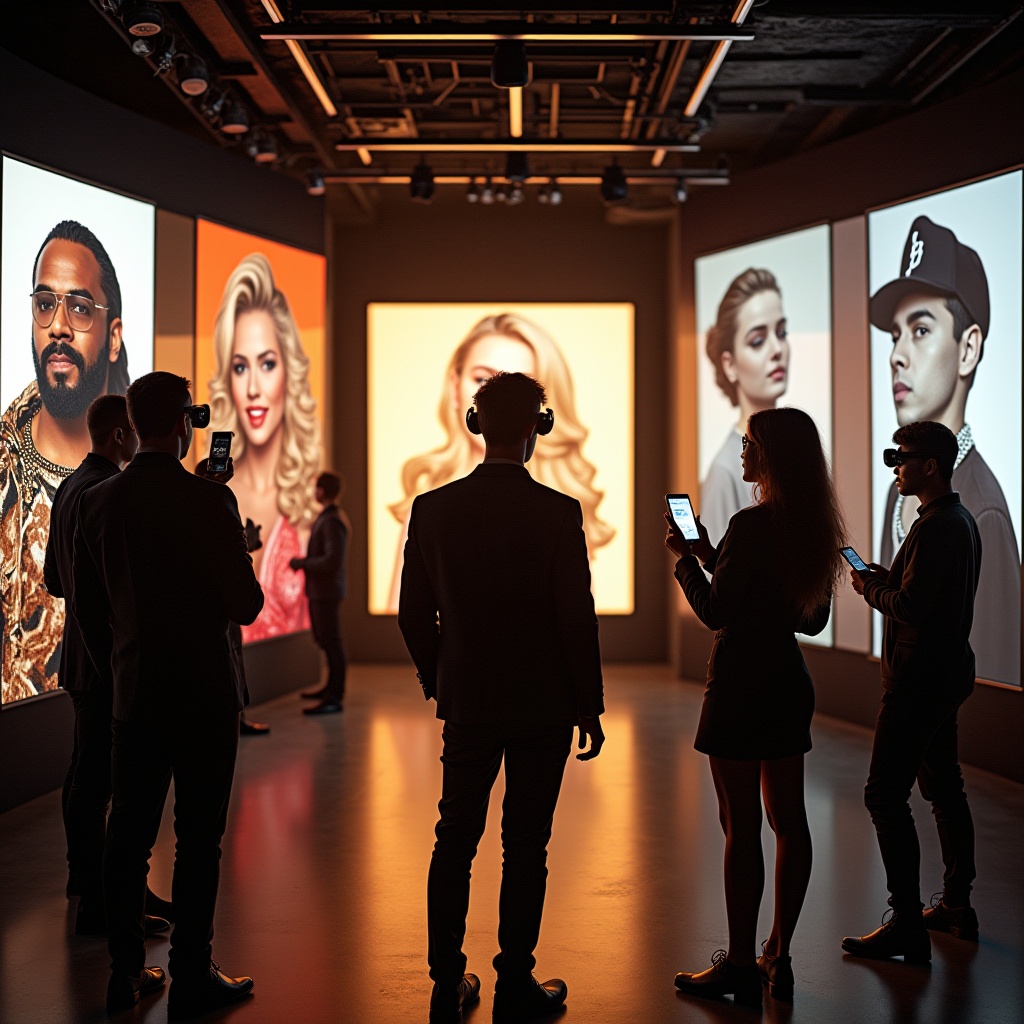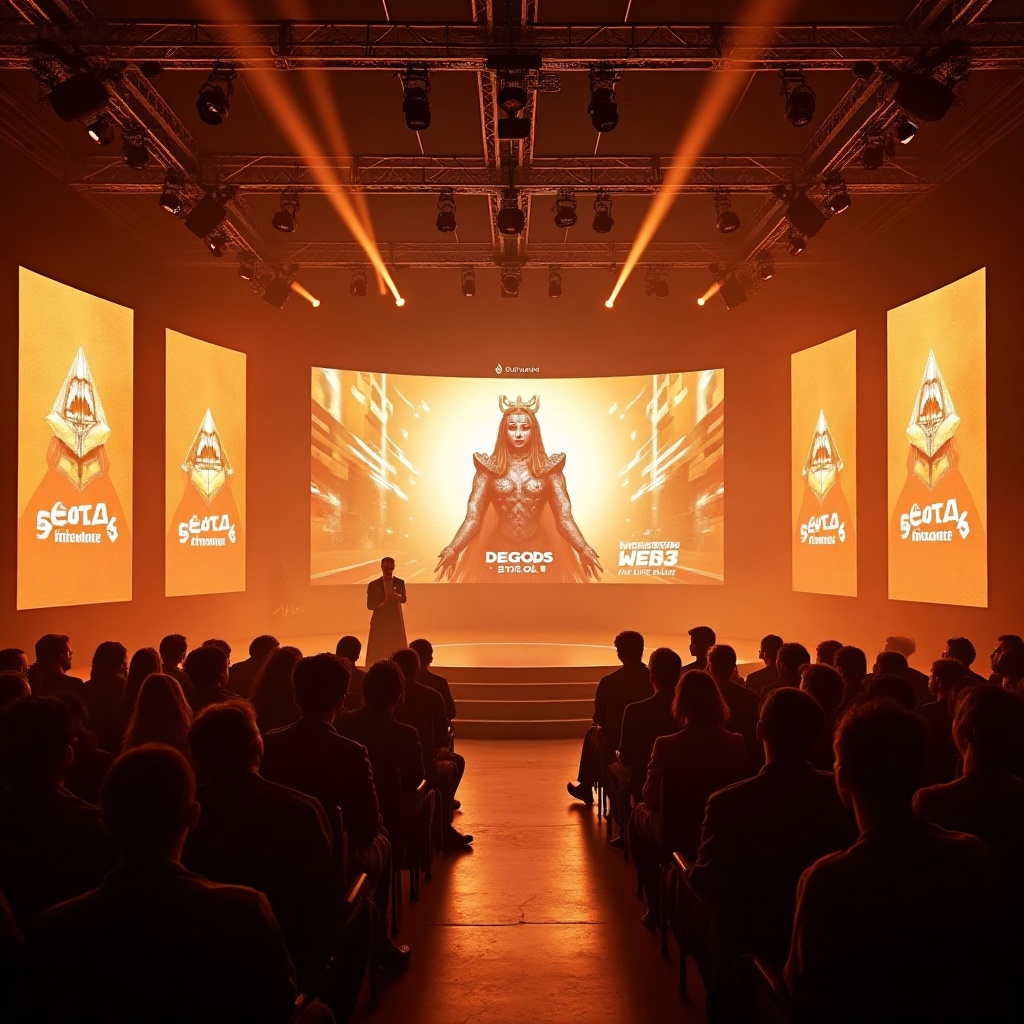In 2025, the NFT market has rebounded dramatically. After years of decline, May saw NFT sales rise to $430 million—a 15 percent increase from April. This revival owes much to celebrities reentering the space. Who better to lend visibility and credibility than high-profile figures like Snoop Dogg, Paris Hilton, and Madonna? Their return marks a shift: celebrity NFTs are no longer about speculative gambles but strategic, utility-driven projects. For Web3 Pop Culture Investors—those at the intersection of blockchain and entertainment—this moment is pivotal. Understanding why celebrities chose 2025 to relaunch their NFT portfolios and how they’ve structured these ventures can inform both seasoned and novice investors. In this article, we’ll trace the evolution of celebrity NFT engagement, highlight leading portfolios and innovative trends, assess investment opportunities and risks, and glimpse the future of this dynamic sector. By the end, you’ll grasp why 2025 may be remembered as the year celebrity NFTs transformed from dormant experiments into dominant digital ecosystems.
The Resurgence of Celebrity NFTs in 2025
1. Early Adoption and Initial Hype In the early 2020s, celebrities like Snoop Dogg, Paris Hilton, and Steve Aoki embraced NFTs as creative branding exercises. Under the pseudonym Cozomo de’ Medici, Snoop Dogg amassed CryptoPunks and other blue-chip assets, including a CryptoPunk #8472 valued at $1.71 million. Paris Hilton’s collaborations exceeded $1.5 million in sales. Steve Aoki curated Bored Apes, CryptoPunks, and more. These projects offered exclusive content—unreleased music, digital artwork, and VIP access. The novelty drove prices skyward, but the market soon became saturated with copycat drops lacking real utility.
2. Market Correction and Skepticism By late 2021, NFT platforms saw waning activity; floor prices plunged, and critics highlighted scams, wash-trading, and environmental concerns. Many celebrity-backed drops were criticized as vanity projects that failed to deliver lasting value. Platforms tightened verification, and developers focused on scalability, high gas fees fell as layer-2 solutions emerged. Celebrities retreated, reevaluating their approach.
3. Strategic Reengagement in 2025 In 2025, celebrities returned with measured, utility-focused strategies. Snoop Dogg’s $4.63 million portfolio diversified into virtual experiences on his “Snoopverse” in The Sandbox. Madonna’s sale of Bored Ape #4988 for $324 000 tied into her documentary project, merging film and blockchain. Paris Hilton’s $453 700 portfolio supports female digital artists and includes virtual fashion experiences in Roblox and The Sandbox. Logan Paul’s Originals DAO turns fans into stakeholders with governance rights. Justin Bieber’s $1.3 million Bored Ape purchase now links to music royalties. These moves underscore that celebrity NFTs have matured into multifaceted ecosystems—combining branding, revenue streams, fan engagement, and innovation—rather than one-off marketing stunts.
The Evolution of Celebrity NFT Engagement
Each of these portfolios reveals that celebrity NFTs today are more than collectible art. They’re ecosystems blending music, fashion, gaming, and finance. By holding these tokens, fans gain access to experiences, governance roles, revenue streams, and real-world perks. This shift from collectible JPEGs to multidimensional utility defines the current renaissance.
Top Celebrity NFT Portfolios in 2025
Snoop Dogg (Cozomo de’ Medici)
Snoop Dogg’s portfolio, valued at $4.63 million, features CryptoPunks, Bored Apes, Meebits, and Moonbirds. His “Snoopverse” on virtual land in The Sandbox hosts concerts, store interactions, and mini-games. NFT holders access early music drops, backstage passes, and VIP dining experiences. By merging music, gaming, and real-world perks, Snoop exemplifies how a celebrity can leverage NFTs to build an interconnected brand ecosystem.
Steve Aoki
Steve Aoki’s $903 000 portfolio includes Bored Apes, CryptoPunks, and exclusive drops tied to his music. His trilogy of NFTs—representing his upcoming album—combines demos, remix rights, and a share of streaming royalties. A staking mechanism allows fans to earn governance tokens, giving input on videos and tour stops. This reciprocal model deepens fan-artist relationships by involving holders in creative decisions.
Madonna
Madonna’s $215 490 portfolio centers on narrative and innovation. She owns Bored Ape #4988 and collaborated with Beeple for the “Mother of Creation” series, tied to her documentary. Hybrid NFTs combine physical vinyl that, when played on blockchain-linked turntables, unlock additional digital artwork. By intertwining music, storytelling, and technology, Madonna shows how legacy artists can reinvent themselves in Web3.
Paris Hilton
Paris Hilton’s $453 700 portfolio champions community and female artists. She holds Bored Ape #1294 and launched the “Past Lives, New Beginnings” generative art series. Her incubator fund supports women in digital art with grants and mentorship. In ParisWorld, fans explore virtual fashion experiences on Roblox and The Sandbox, wearing her branded wearables. Hilton’s approach merges fashion, art, and social impact, showing how celebrity influence can foster cultural shifts.
Logan Paul
Logan Paul’s $979 000 portfolio demonstrates the power of community governance. His Originals DAO uses tokens that grant holders voting rights on creative directions, from album covers to charity picks. His key NFT, CryptoPunk #2294 (valued over $500 000), is used as collateral for smart-contract loans. By combining finance, art, and governance, Paul’s model appeals to investors who seek active engagement and agency.
Justin Bieber
Justin Bieber’s $1.3 million investment in Bored Ape #3001 anchors a portfolio including Mutant Ape Yacht Club, CloneX, Doodles, CyberKongz, and World of Women. His roadmap features “Bieber’s Box Office” NFTs tied to digital premiere passes for short films and behind-the-scenes footage. Music-backed tokens share streaming royalties with holders. Bieber’s strategy links his film and music careers to blockchain, offering both earnings and experiences.
These portfolios illustrate that celebrity NFTs in 2025 transcend simple art. They form ecosystems blending music, fashion, gaming, and finance, granting fans access to experiences, governance roles, revenue streams, and real-world perks. This shift from collectible JPEGs to multidimensional utility defines the current renaissance.
Emerging Trends in Celebrity NFT Projects
Hybrid NFTs: Digital and Physical Integration
Hybrid NFTs combine digital tokens with tangible items—signed records, limited-edition sneakers, or autographed art. Snoop Dogg’s 2025 sneaker drop pairs a digital token with redeemable real-world footwear. Luxury brands like Gucci introduced the “Garden of Wonders” silk scarves that unlock corresponding digital wearables in metaverses. Hybrid models appeal to both digital natives and traditional collectors, boosting credibility and resale value.
Metaverse Integration: Virtual Experiences
Celebrities are solidifying their presence in metaverses like Decentraland and The Sandbox. Idris Elba hosted an NFT-gated virtual film premiere where token holders explored interactive installations. Paris Hilton’s fashion shows occur both on physical runways and simultaneously in Roblox and The Sandbox. Fans can meet her digital avatar and purchase branded merchandise. As virtual worlds become mainstream, these experiences will drive demand for associated celebrity NFTs.
Dynamic NFTs: Evolving Tokens
Dynamic NFTs evolve based on user engagement or real-world events. A musician might issue a “Tier 1” NFT that upgrades to “Tier 2” after a fan streams a song multiple times, unlocking unreleased demos. Smart contracts track triggers—like streaming activity or social media interactions—and automatically update token metadata. This gamifies fan involvement, fostering loyalty and repeated engagement. Future dynamic NFTs will incorporate AI personalization, tailoring content to individual preferences.
Luxury Brand Collaborations
Luxury fashion houses and A-list celebrities are launching NFT partnerships that blend digital and physical exclusives. In early 2025, Gucci teamed with Bad Bunny to release NFT-backed handbags embedded with NFC chips tied to digital tokens. Owners gain access to private events and previews. Louis Vuitton collaborated with Timothée Chalamet on generative art pieces, with holders invited to private concerts and co-design future collections. These collaborations elevate brand prestige and offer fans high-fashion status symbols in both tangible and digital forms.
Tokenized Real-World Assets
NFTs now represent fractions of real-world value—music royalties, virtual real estate, and even sports memorabilia. Musicians sell tokenized streaming rights; property developers issue NFTs representing shares in luxury vacation homes. Sports teams auction tokenized season ticket packages as digital trading cards. Athletes tokenize game-worn jerseys backed by on-chain provenance. By 2025, tokenized real-world assets have matured, attracting institutional investors and validating NFTs as a bona fide asset class, not a fleeting trend.
Investment Opportunities and Considerations
The NFT market is projected to grow from $48.74 billion in 2025 to $703.47 billion by 2034, driven by mainstream adoption, improved infrastructure, and celebrity engagement. Yet volatility remains, so investors must prioritize due diligence and diversification.
Market Performance, Growth Drivers, and Niches
Music NFTs: Platforms like Royal.io and Sound.xyz let artists sell fractional streaming rights as NFTs. Fans earn royalties, becoming stakeholders. Hedge funds now acquire portfolios of music NFTs as yield-generating assets.
Virtual Real Estate: Virtual land in The Sandbox and Decentraland appreciates as celebrities host ticketed events and brand experiences. Floyd Mayweather’s virtual boxing masterclasses and Ariana Grande’s virtual concerts drive land value.
Avatar NFTs: Owning a celebrity-issued avatar in multiple games (e.g., CryptoAvatars, Bored Ape’s “Otherside”) grants cross-platform utility—akin to owning a limited-edition sports jersey in real life.
Opportunities within Celebrity NFTs
Blue-Chip Collections: Celebrity NFTs tied to established names (e.g., Snoop Dogg’s portfolio) offer relative stability and liquidity. These tokens often serve as collateral on NFT lending platforms.
Community DAOs: Projects like Logan Paul’s Originals DAO give token holders governance power—voting on creative decisions and revenue allocation. DAOs turn fans into co-creators and co-investors.
Tiered Utility Models: Celebrities employ multi-tiered NFTs—entry-level tokens grant Discord access and AMAs; mid-tiers unlock virtual meet-and-greets and signed merch; top-tiers include VIP event invitations and profit-sharing. This tier system appeals to diverse fan segments.
Cross-Platform Interoperability: NFTs usable across gaming and social platforms (e.g., wearables in Roblox, Fortnite, and The Sandbox) command premium valuations. Interoperability boosts network effects as owners showcase assets broadly.
Risk Assessment and Pitfalls
Volatility: Celebrity NFTs can surge in value following social media buzz or decline sharply if sentiment shifts.
Regulatory Uncertainty: Some NFTs may be classified as securities in certain jurisdictions, necessitating compliance. Licensing terms must be clear: check for commercial rights, derivative permissions, and resale royalties.
Scams and Wash Trading: Fake mint sites and impersonator accounts remain threats. Verify contract addresses on explorers like Etherscan and only purchase from verified marketplaces. Look for genuine community engagement on Discord or Twitter.
Liquidity Constraints: Some celebrity NFTs have limited trading volume, making it hard to exit positions. Analyze listing history, average sale prices, and holder distribution using tools like DappRadar, Nansen, and NonFungible.com.
Overreliance on Hype: Avoid tokens that rest solely on celebrity names. Instead, prioritize projects with clear roadmaps, transparent tokenomics, and tangible utility.
Due Diligence Best Practices
Investigate Teams and Collaborators: Even celebrity-led drops rely on developers and creatives. Verify their track records and past successes.
Examine Roadmaps and Milestones: Projects should provide detailed timelines and evidence of delivered milestones, such as audited smart contracts or completed token distributions.
Assess Community Health: Active Discord channels with real user discussions—versus bots—signal a robust ecosystem. Look for developer Q&As, fan-driven events, and transparent governance.
Review Holder Distribution: Avoid projects where a handful of wallets control large token percentages. A balanced distribution reduces manipulation risk.
Confirm Licensing and IP Terms: Ensure NFTs explicitly state whether holders can create derivative works, commercialize content, or simply use tokens for personal enjoyment.
Diversify Across Verticals: Spread investments among different sectors—music, gaming, fashion, and film—to mitigate risk if one niche underperforms.
The Future of Celebrity NFTs
Utility-Driven Tokens: Beyond JPEGs
Static art is giving way to tokens with real utility: access to content platforms, governance rights, and revenue streams. Musicians will release dynamic NFTs that evolve if fans stream songs or attend events, unlocking behind-the-scenes content. Film projects will allow holders to share in box-office revenue or vote on plot elements. These utility-driven tokens strengthen fan loyalty and provide long-term value.
Preservation of Digital Legacy
NFTs are emerging as tools for estate planning and IP protection. By tokenizing personal artifacts—handwritten lyrics, directors’ notes, or unreleased footage—celebrities can preserve their legacy on blockchain. Future beneficiaries gain verifiable, tamper-proof ownership. Athletes may issue NFTs tied to championship moments, ensuring historical accuracy and preventing forgeries. As these digital archives become collectible, they serve cultural historians and loyal fans alike.
AI Integration and Personalized Fan Interactions
AI is transforming how fans interact with celebrity NFTs. AI-driven tokens can generate personalized messages, new art, or custom music based on owner preferences. Holders might receive monthly AI-generated remixes of a favorite song. Virtual avatars powered by large language models can host meet-and-greets, answer fan questions, or guide interactive metaverse experiences. These AI-enhanced tokens maintain ongoing engagement, offering fresh content rather than static assets.
Simplified Onboarding and Mass Adoption
Complexity once hindered NFT adoption. In 2025, many celebrity drops launch on mobile-first platforms that abstract blockchain mechanics. Users sign in with social accounts, buy tokens with credit cards, and store them in custodial wallets, all while preserving on-chain verification. A fan may think they’re buying exclusive content, but they’re acquiring an NFT that can appreciate and trade securely. By removing friction—no private keys or gas fees—celebrities can onboard millions of new fans without sacrificing authenticity.
Regulatory Clarity and IP Licensing
By mid-2025, clearer regulations have emerged. Celebrity NFT contracts embed licensing terms—defining commercial rights, remix permissions, and royalty splits. In fashion, a token might grant rights to produce co-branded garments with automatic royalty distribution via smart contracts. Music NFTs specify revenue-sharing rules for remixes, ensuring transparent payouts. This legal transparency instills confidence in buyers who now know exactly what rights they hold.
Mainstream Cultural Acceptance and Institutional Investment
NFTs have moved from niche corners to museums, auctions, and university study. Major institutions host “Digital Icons” exhibitions showcasing celebrity collections. Academic programs examine NFTs’ impact on ownership, authenticity, and fan engagement. Meanwhile, hedge funds and family offices allocate capital to diversified NFT portfolios, recognizing them as a new asset class. Institutional involvement enhances liquidity, stabilizes prices, and cements NFTs in the financial world.
Looking ahead, expect cross-industry collaborations—celebrities teaming with gaming studios, VR developers, and even automotive brands for unique NFT initiatives. Sustainability will matter: many projects migrate to proof-of-stake chains or layer-2 solutions, with portions of proceeds funding carbon offsets. Fan-driven crowdfunding through NFTs will rise—supporting films, albums, or causes, with token holders receiving special recognition or credits. Virtual “citizenships” in metaverse nations may emerge, offering holders governance tokens, local events, and shared revenue models. By late 2025, celebrity NFTs won’t be a fad—they’ll be foundational to modern fandom, enabling fans to buy influence, co-create content, and preserve legacies on the blockchain.
A Resilient, Evolving NFT Ecosystem
The journey of celebrity NFTs—from the early hype of one-off drops through market correction to today’s utility-focused relaunch—illustrates innovation and adaptation. In 2025, NFTs demonstrate value beyond digital art: they’re tools for fan engagement, legacy preservation, and revenue sharing. Web3 Pop Culture Investors have unprecedented opportunities to invest in genuine utility. Yet they must navigate volatility, legal nuances, and fraud. Success demands thorough research: analyzing roadmaps, licensing terms, community health, and smart contract security. Diversification across verticals—music, gaming, fashion, film—mitigates risk.
Looking forward, AI-enhanced content, virtual experiences, and dynamic token mechanics will drive constant innovation. Celebrity NFTs are no longer novelties—they’re reshaping culture. By owning a token, you gain a stake in a living ecosystem where fame, fan loyalty, and digital ownership intersect. As institutional investors validate NFTs as an asset class, liquidity and stability improve. 2025 is not merely a rebound year; it marks a paradigm shift. Early celebrity NFTs were speculative; today’s projects aim for long-term engagement and value. Physical and digital worlds converge, making celebrity NFTs participatory and evolving. Whether you’re a collector or newcomer, now is the moment to explore this vibrant frontier, because owning a celebrity NFT in 2025 is more than possession—it’s participation in the future of fandom and entertainment.





